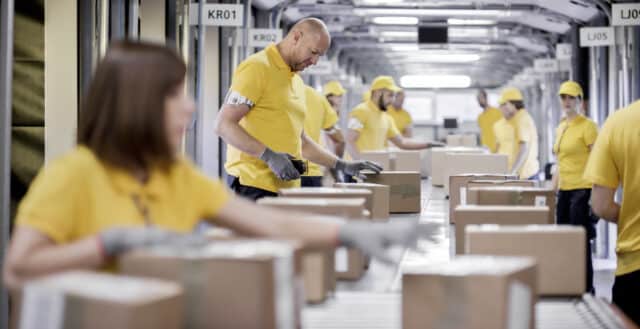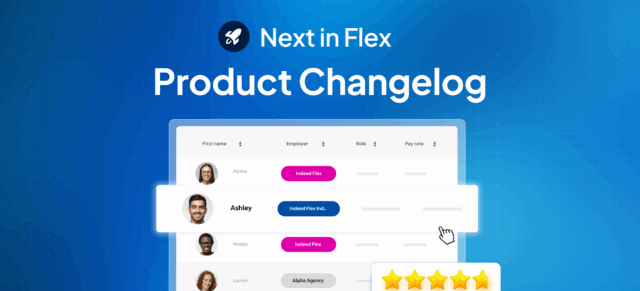
With a growing need for operational agility, the so-called ‘blended workforce’ is increasingly popular. But how does the model work? And how can you implement it?
The blended workforce is a staffing model where a “core” unit of full-time employees is periodically supplemented by a roster of temporary workers. These temporary workers may be drafted in to meet unexpected demand; to fit seasonal shifts in consumer behaviour; or simply to provide specific skills not represented amongst the full-time workforce.
With a nearly 10% increase in the number of temporary workers in the UK, the model has become increasingly popular. And given that less than half of all executives believe their current workforce is adaptable to the new future of work, it’s unsurprising that more leaders are looking to understand exactly how the model works – and what it can do for them.
What are the benefits?
- Cost savings
A blended workforce can provide major cost savings for businesses. Even when temporary workers’ hourly rate exceeds the standard full-time employee’s, businesses tend to save on factors such as benefits and bonuses. Add to that the ability to avoid overstaffing by adapting your staffing to fit demand, and the blended workforce starts to look a lot more financially efficient.
- Greater agility
Businesses can unlock far greater agility by balancing full-time workers with a roster of temporary talent. They can adapt the size of their workforce when necessary, for both strategic and logistical reasons. And they can far more easily change the composition of their workforce – that is, alter what department or location the bulk of their workers are concentrated in.
- Access specific skills
A business may benefit from a specific skill set, but not require it frequently enough to justify even a part-time contract. With a blended workforce, these specific skills can simply be drafted in when convenient, enabling far more room for strategic manoeuvre.
- More innovation
Innovation is often a product of collaboration, and the more diverse perspectives a business has – the more innovation it is likely to produce. A blended workforce allows you to bring in a large number of ‘outside’ perspectives, increasing the odds of creative ideas and fresh insights.
- Scalability
Many businesses struggle to manage labour costs as they scale. It may be profitable to increase the full-time workforce slightly, but demand is not always static – and many businesses suffer when sudden slumps in demand hit. A blended workforce enables businesses to adapt to changing demand and scale quickly – without any long-term commitment.
What are the challenges?
- Accessing talent
A blended workforce without reliable access to high-calibre talent is likely to create more problems than it solves. Even a single unexpected absence or no-show can cause cascading problems throughout the workforce. Businesses, therefore, tend to rely on temporary agencies or providers that will ensure they have a strong pool of temporary workers – and don’t have to rely too heavily on any single worker.
- Maintaining employee experience
Shifting to a new staffing model inevitably presents cultural challenges, and keeping the entire workforce happy can be difficult. Temporary workers may feel their shift patterns are not consistent enough, or they are simply not being offered enough work. On the other hand, full-time employees may feel their sense of stability is being compromised by the revolving door of temporary colleagues.
- Predicting demand
One of the major benefits of the blended workforce model is the ability to adapt the size of your workforce to changing demand. But many businesses do not have sufficient processes in place to base their decisions on reliable data, and may therefore miss out on opportunities to take full advantage of their newfound staffing agility.
Four tips to build a better blended workforce
- Focus on long-term strategy
Despite growing interest in the blended model, just 35% of companies currently include their temporary workforce in their strategic planning. And without a long-term vision, the workforce you build is likely to be fragmented and inefficient. Leaders should ask themselves: how do we want our workforce to operate in five years’ time? And this should serve as the basis for decisions made today.
- Get buy-in from key stakeholders
To operate smoothly, the blended workforce requires multiple departments to coordinate and cooperate. But in order to do that, every decision-maker and manager must properly understand a) what you are trying to achieve, and b) the value it will bring them. Before implementing a blended workforce, you should therefore carefully lay out the case with each key stakeholder and make clear what the new model will require of them at each stage of development.
- Create a compatible culture
Creating a cultural consensus and a sense of shared values is key to making the two parts of a blended workforce operate harmoniously. But company culture cannot be enforced top-down, and you will have to rely on individual workers’ willingness to engage. It is therefore vital that you properly articulate the benefits of the system – and ensure the individuals you hire fit the culture you are hoping to foster.
- Use the Indeed Flex marketplace
Sourcing a large number of reliable, high-calibre temporary workers can be extremely challenging. Many businesses end up working with multiple agencies in order to fill their rotas, which creates a cultural disconnect and leads to unnecessary logistical complexity. The Indeed Flex marketplace, however, provides your business with access to a huge community of carefully vetted temporary workers who are happy to work because our system gives them the autonomy and control they crave.
To discover more about how Indeed Flex can help you build a better blended workforce, connect with our sales team today.








